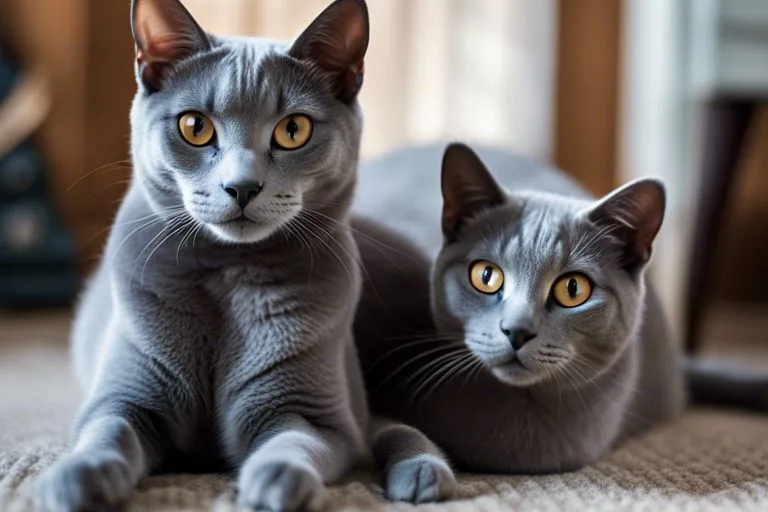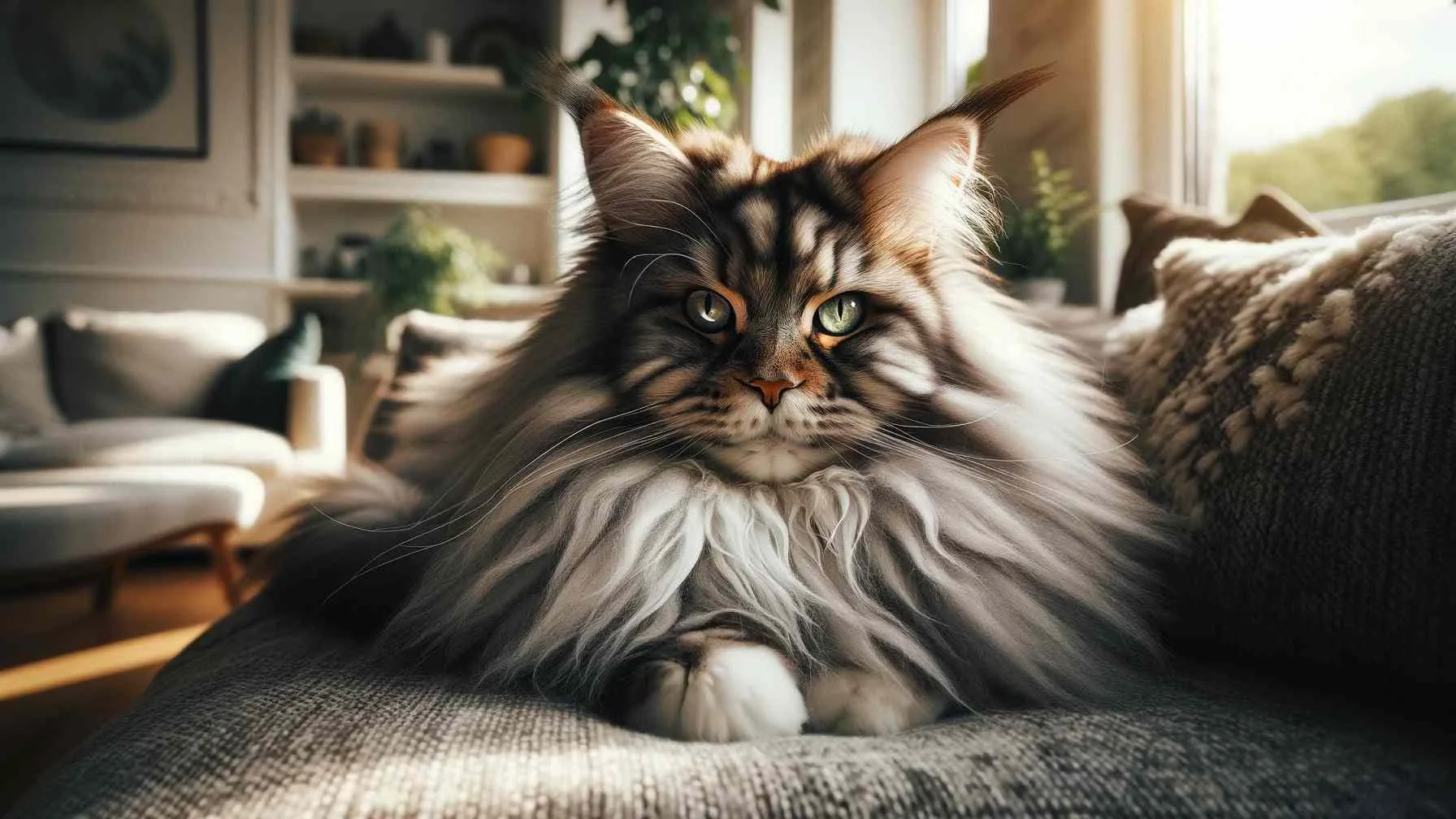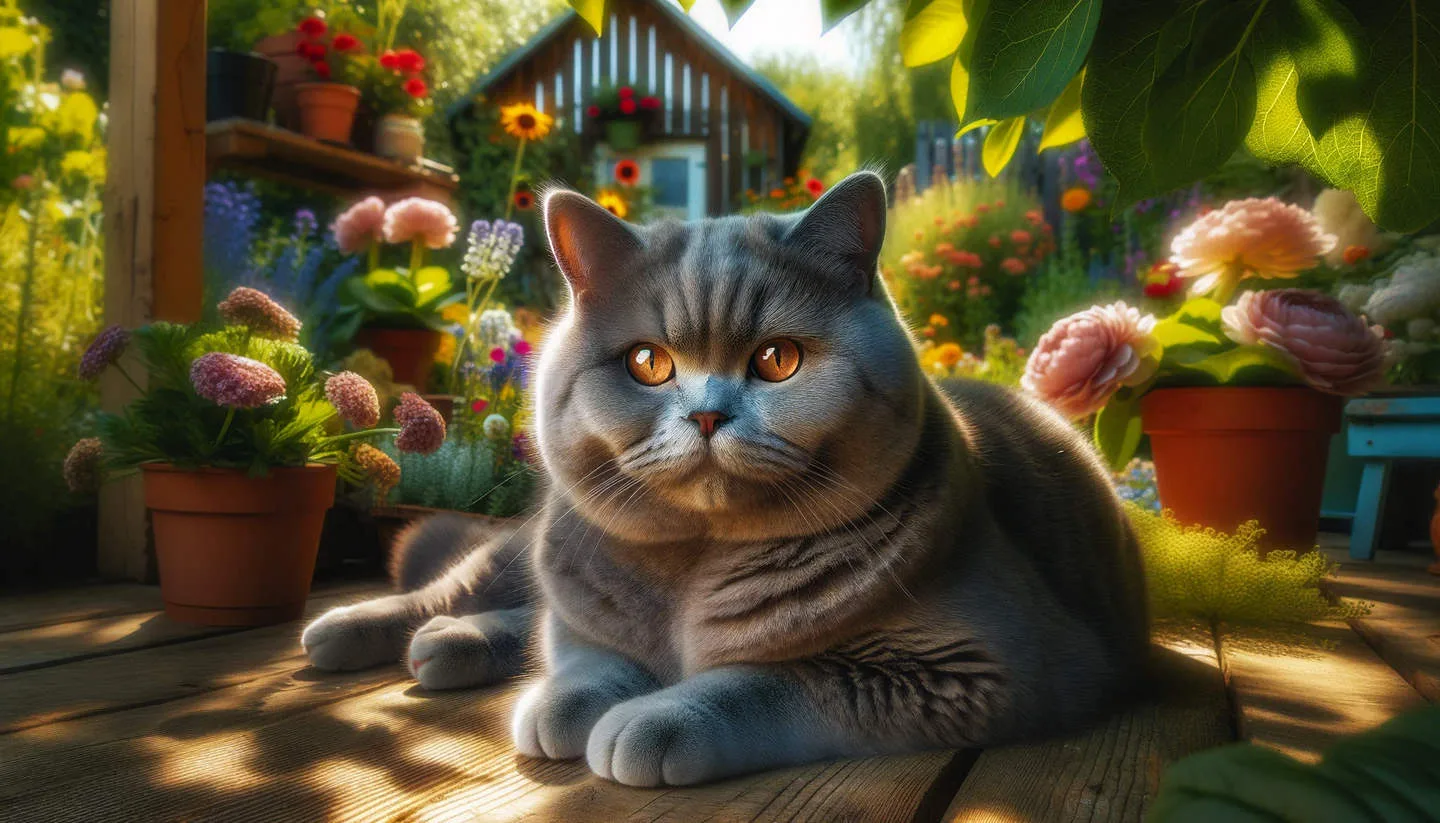Have you ever noticed your Russian Blue cat experiencing hair loss on their tail? This may be a sign of a condition known as tail alopecia. Tail alopecia is a rare phenomenon in the Russian Blue breed, but it can be concerning for pet owners. This condition can be caused by a variety of factors, including genetics, stress, and skin allergies. It is important to monitor your cat’s tail and seek professional veterinary care if you notice any unusual hair loss. Additionally, proper grooming and nutrition can help prevent and manage tail alopecia in your Russian Blue.
Key Takeaways:
- Genetic Predisposition: Russian Blue cats have a genetic tendency towards developing tail alopecia, which may be influenced by breeding practices.
- Stress and Anxiety: Environmental stressors and anxiety can contribute to the development of tail alopecia in Russian Blue cats, leading to excessive grooming and hair loss.
- Dermatological Disorders: Skin conditions such as allergies, parasites, or infections can cause tail alopecia in Russian Blue cats, requiring veterinary diagnosis and treatment.
- Diet and Nutrition: Inadequate diet and nutrition can impact the health of a Russian Blue cat’s coat, potentially leading to tail alopecia if essential nutrients are lacking.
- Management and Care: Providing a stress-free environment, addressing skin and coat health, and ensuring proper grooming and nutrition can help prevent and manage tail alopecia in Russian Blue cats.
Background on Russian Blue Cats
Obviously, before delving into the specific causes of tail alopecia in Russian Blue cats, it’s important to understand the breed as a whole. Known for their striking silver-blue coat and vivid green eyes, Russian Blue cats are a popular choice for many families. They are a medium-sized, muscular breed with a sleek and elegant appearance. Their personality is often described as being affectionate, gentle, and intelligent, making them a beloved pet for many.
Characteristics of Russian Blue Breed
Russian Blue cats are known for their unique combination of physical traits and personality. Their most defining characteristic is their stunning silver-blue coat, which is short, dense, and plush to the touch. They also have vivid green eyes, a medium-sized and muscular build, and a strikingly elegant appearance. In terms of personality, Russian Blue cats are known for being affectionate, gentle, and intelligent. They form strong bonds with their human companions and enjoy being a part of the family.
Prevalence of Tail Alopecia in Russian Blues
When it comes to tail alopecia, Russian Blue cats are unfortunately prone to this condition. Tail alopecia is characterized by hair loss on the tail, which can be caused by a variety of factors such as genetics, stress, or underlying health issues. While not life-threatening, it can be a concerning issue for Russian Blue cat owners. It’s important to be aware of this condition and monitor your Russian Blue’s tail for any signs of hair loss. If you notice any changes in their tail’s appearance, it’s crucial to consult with a veterinarian to address any potential underlying causes and seek appropriate treatment.
Causes of Tail Alopecia
Some common causes of tail alopecia in Russian Blue cats include genetics, environmental and behavioral influences, medical conditions, allergies, and skin infections. If your Russian Blue cat is experiencing hair loss on their tail, there are several factors to consider when determining the underlying cause. You may want to consult with a veterinarian to rule out any potential health concerns and identify the specific cause of the alopecia.
Genetic Factors
In some cases, genetic factors may play a role in tail alopecia in Russian Blue cats. Certain genetic conditions or predispositions within the breed can contribute to hair loss on the tail. Factors such as inheritance of specific genes or breeding practices can influence the development of alopecia. Any concerns about genetic factors should be discussed with a veterinarian or a professional breeder.
Environmental and Behavioral Influences
Additionally, environmental and behavioral influences can also contribute to tail alopecia. Factors such as excessive grooming, stress, or environmental allergens may lead to hair loss on the tail. Hi, my 12 year old Russian Blue cat has hair loss on both… You may want to assess your cat’s environment and behavior to identify any potential triggers for tail alopecia.
Medical Conditions Leading to Alopecia
In some cases, underlying medical conditions may lead to tail alopecia in Russian Blue cats. Health issues such as hormonal imbalances, skin infections, or parasitic infestations can impact the health of your cat’s skin and coat, leading to hair loss on the tail. It’s essential to have your cat evaluated by a veterinarian to rule out any potential medical causes for the alopecia.
Allergies and Skin Infections
Allergies and skin infections can also contribute to tail alopecia in Russian Blue cats. If your cat is experiencing allergic reactions or skin irritations, it may lead to excessive licking, scratching, and hair loss on the tail. Identifying and addressing any underlying allergies or skin infections is crucial for resolving the alopecia and promoting your cat’s overall well-being.
Diagnosis and Treatment
Your Russian Blue may be experiencing tail alopecia, but it’s important to consult with a veterinarian for an accurate diagnosis and tailored treatment plan. Tail alopecia in Russian Blue cats can be a complex issue, and a professional diagnosis will help determine the underlying cause and the best course of action for your specific feline friend.
If you’ve noticed unusual hair loss in your Russian Blue’s tail, it’s essential to seek veterinary advice promptly. Tail alopecia can be a symptom of an underlying medical condition, and early intervention is crucial to ensure the best possible outcome for your cat. Your vet will be able to conduct a thorough examination and may recommend additional tests to pinpoint the cause of the hair loss.
Identifying Tail Alopecia in Russian Blues
Tail alopecia in Russian Blues is characterized by hair loss on the tail, and it may present as patchy or complete baldness. You may also notice redness, irritation, or flakiness of the skin in the affected area. It’s essential to monitor any changes in your cat’s tail fur and skin and seek professional guidance if you suspect an issue.
Treatment Options and Management
Once your vet has diagnosed tail alopecia in your Russian Blue, they will discuss suitable treatment options and management strategies. The approach to treating tail alopecia can vary depending on the underlying cause, and your vet may recommend dietary changes, medication, or topical treatments. It’s crucial to follow their guidance closely and attend any follow-up appointments to monitor your cat’s progress.
Managing tail alopecia in Russian Blues may involve ongoing care to support your cat’s skin and coat health. Your vet can provide advice on grooming practices, skin care routines, and environmental adjustments to promote healing and prevent recurrence of the condition.
Prevention and Care
Despite the genetic predisposition of Russian Blue cats to tail alopecia, there are steps you can take to prevent or minimize its occurrence. By being proactive in your approach to your cat’s care, you can help maintain their health and well-being.
Best Practices for Prevention
One of the best ways to prevent tail alopecia in Russian Blue cats is to ensure they are on a high-quality, balanced diet. A diet rich in essential nutrients, such as omega-3 fatty acids, can help maintain a healthy coat and skin. Additionally, regular grooming and proper hygiene practices can help prevent skin irritation and potential hair loss. Furthermore, reducing stress and providing a stable environment for your cat can also play a role in minimizing the occurrence of tail alopecia.
Ongoing Care and Monitoring
Regular monitoring of your Russian Blue cat’s coat and skin is essential for early detection of any issues, including tail alopecia. Keep an eye out for any changes in their skin, such as redness, itching, or flakiness, as these could be early signs of a problem. Additionally, make sure to schedule regular check-ups with your veterinarian to discuss your cat’s overall health and any concerns you may have. By staying vigilant and proactive in your ongoing care, you can address any potential issues before they become more serious.
What Causes Tail Tail Alopecia In Russian Blue Breed?
So, now you understand the causes of tail alopecia in Russian Blue cats. It’s important to remember that this condition is largely genetic and can be exacerbated by environmental factors such as stress, poor diet, and allergies. If you have a Russian Blue cat, it’s crucial to provide a balanced diet, regular grooming, and a stress-free environment to minimize the risk of developing tail alopecia. Additionally, it’s important to consult with a veterinarian if you notice any skin or fur issues on your cat’s tail to ensure proper treatment and management of the condition.
FAQ
Q: What is tail alopecia in Russian Blue breed?
A: Tail alopecia in Russian Blue cats is the loss of hair on their tail, leaving the skin exposed. It is often referred to as “rat tail” due to the appearance. This condition can be caused by a variety of factors such as genetics, stress, allergies, or hormonal imbalances.
Q: What are the common causes of tail alopecia in Russian Blue cats?
A: Tail alopecia in Russian Blue cats can be caused by genetic predisposition, stress, allergies to food or environmental factors, hormonal imbalances such as hyperthyroidism or Cushing’s disease, or excessive grooming or licking of the tail due to skin irritation. It is important to consult with a veterinarian to determine the specific cause in each individual case.
Q: How can tail alopecia in Russian Blue cats be treated?
A: Treatment for tail alopecia in Russian Blue cats depends on the underlying cause. If the condition is caused by allergies, identifying and removing the allergen from the cat’s environment may help. In cases of stress-related alopecia, providing a calm and enriching environment for the cat can be beneficial. Hormonal imbalances may require medication or hormone therapy prescribed by a veterinarian. It is important to seek professional veterinary advice for an accurate diagnosis and appropriate treatment plan.



